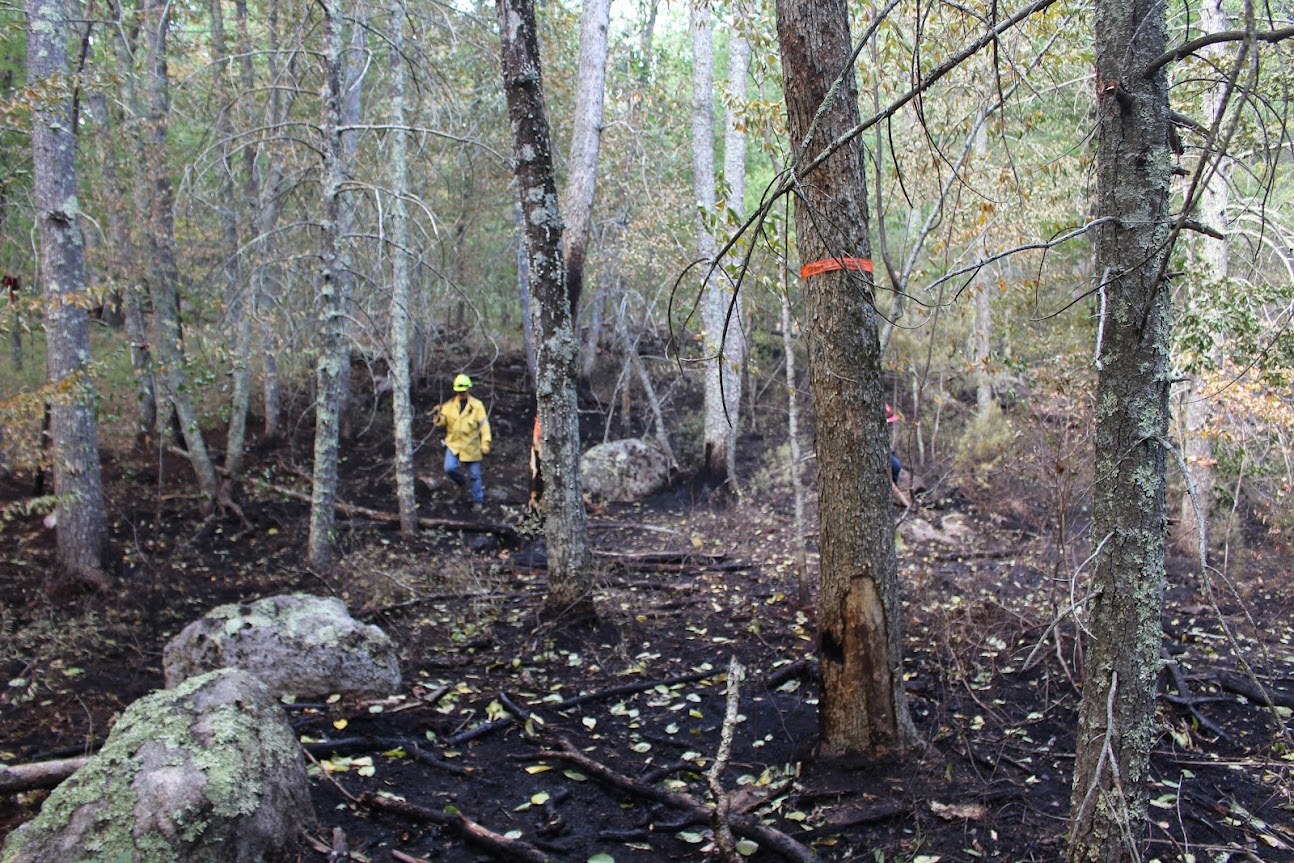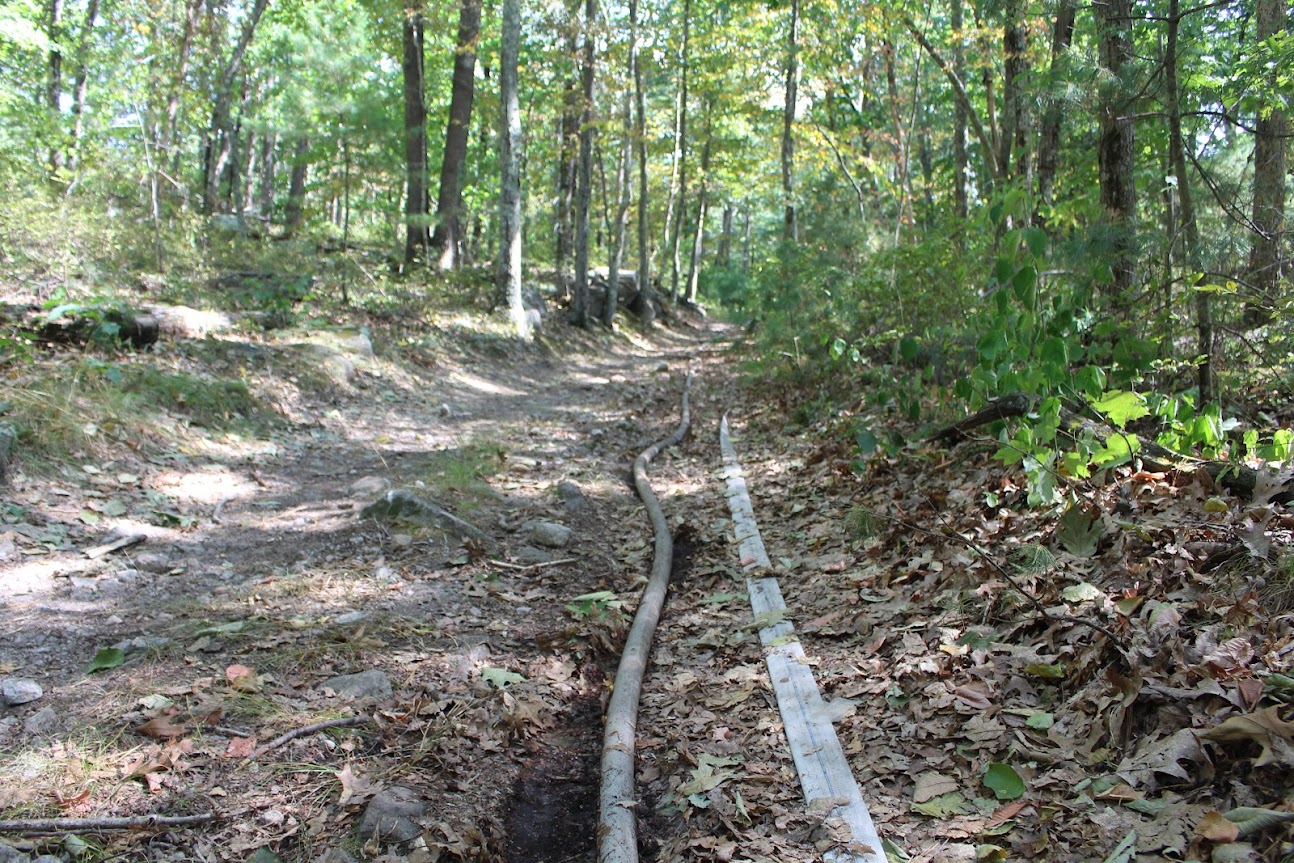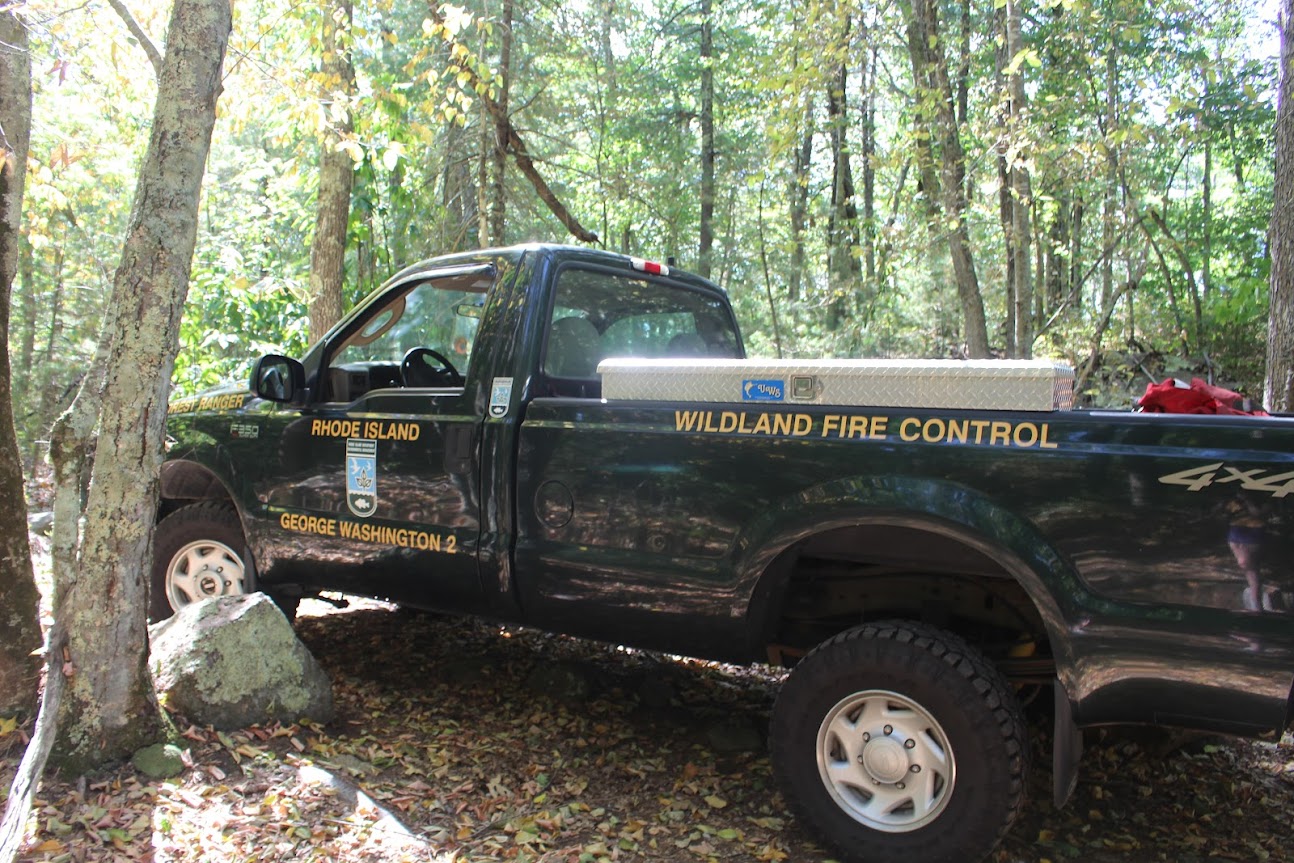Frequency of Brush Fires This Summer Could Offer Glimpse into Rhode Island’s Future
August 26, 2022

BURRILLVILLE, R.I. — A water pump roared through a quiet neighborhood near Spring Lake late last week and emergency vehicles lined part of a shady street. Hundreds of feet of hose trailed from the lake into the woods of the Black Hut Management Area, where a brush fire had burned through part of the forest floor.
The fire, which consumed acres of land in Burrillville and took days and dozens of firefighters to extinguish, was one of more than 70 other forest fires that have burned in Rhode Island this year.
The frequency of fires this summer could become a trend, as climate change raises temperatures in Rhode Island and the weather swings from extreme precipitation to extreme drought, like the state has been experiencing lately.
“In the nine years I’ve had this job, this is the driest summer I’ve seen,” said Ben Arnold, principle forest ranger for the Rhode Island Department of Environmental Management (DEM). “We’ve been a little bit busier than we normally are.”
Within his role in DEM’s Forest Fire Program, Arnold helps fire departments around the state prevent and respond to wildland fires.
Most of the forest fires Arnold has assisted with lately have started from campfires, many of them probably illegal, he noted. On Aug. 26, the state banned outdoor fires at its campgrounds because of the “dangerous risk of wildfires.”
Arnold said that usually in the summer he isn’t worried about forest fires. The busy fire season in Rhode Island is from March 15 to May 15, he explained.
During that period, the winter snow melts and reveals debris on the ground before the trees grow their spring leaves. The early spring sun then shines through the forest, drying up the surface layer, making it easily ignitable.
Once the leaves grow in, as the humidity rises and the late spring and summer rains moisten the ground, the threat of fires decreases, Arnold said.

But this year, even after the foliage thickened, the surface materials and even the roots, pine needles, leaf litter, and other organic material mixed into the dirt, called duff, is dry too.
Brush fires will often clear the dry material on the surface, but many of this summer’s fires have burned deep into the ground, to the duff, making an arduous fight for departments, Arnold said.
About 24 hours after the Burrillville fire began, firefighters still hosed and raked the blackened ground to dose and smother the pockets of heat under the scorched earth.
“We could be out here a couple more days putting out fires that flare up,” Harrisville deputy fire chief Marcel Fontenault said, looking out at the smoking dirt. Between 20 and 30 firefighters tackled the blaze at a time during the fire’s first day, he said.
A fire tower in Massachusetts first spotted the fire burning in the woods in Burrillville.
Fire towers in Rhode Island are no longer manned, Arnold said. Staff used to stay in the towers during periods of heightened fire risk, but Arnold said DEM no longer has the staffing numbers to keep people up there all day, and some of the towers are no longer safe to climb.
Arnold said using drones has been a better way to surveille fires and allows staff to perform more important tasks.
“Our fire program in the state is very small,” Arnold said. “We have four people, and one of those positions is vacant right now.”
The size of the program also makes maintaining fire breaks — natural or man-made features like ridges, rivers, or roads, which can stop the spread of a wildfire and provide a tactical position to fight it — more difficult, though that burden is shared between other departments in DEM on state land.
Arnold would like to focus on training more people to perform prescribed burning, which is an effective tool in reducing fuel and preventing or minimizing future fires. A controlled fire, under the right conditions, burns up the materials that could start a forest fire. It also trains staff for real fires and can contribute to habitat management, he said.

“There’s not a lot of folks working in wildfire management in Rhode Island and southeastern Massachusetts compared to the American West, and their capacity to do [prescribed burning] is very, very limited,” said Christopher Riely, a forestry specialist at the University of Rhode Island. But when they are performed, prescribed burns can reduce the likelihood of a “more explosive type of fire.”
As weather patterns become more volatile and Rhode Island sees more extreme weather, including more periods of drought, residents concerned about fire risk should plan ahead, Riely said. Assessing areas of higher fire susceptibility, clearing fuel, and maintaining access points for firefighters are all important steps in being prepared.
“This is something that we may need to learn to live with more in the future,” Riely said. “Certainly, there’s going to be a learning curve for all this in Rhode Island and southeastern Mass.”
Arnold said he has seen an uptick this summer in fire safety interest because of all the forest fires and dry conditions. He suggested using Firewise USA guidelines and common sense.
“When we’re in an extreme drought,” he said, “it’s not the time to go into the woods and have a campfire.”
Colleen Cronin is a Report for America corps member who writes about environmental issues in rural Rhode Island for ecoRI News.
Categories
Join the Discussion
View CommentsRecent Comments
Leave a Reply
Your support keeps our reporters on the environmental beat.
Reader support is at the core of our nonprofit news model. Together, we can keep the environment in the headlines.
We use cookies to improve your experience and deliver personalized content. View Cookie Settings




So why is DEM allowing fires again and claiming there is a very low fire risk? Someone has got their wires crossed and I don’t think it is EcoRI News!! I’d say the DEM ‘experts’ need to leave the office and spend more time in the field to get a true picture of how dry things really are. Here’s the first clue, we’re in a DROUGHT.